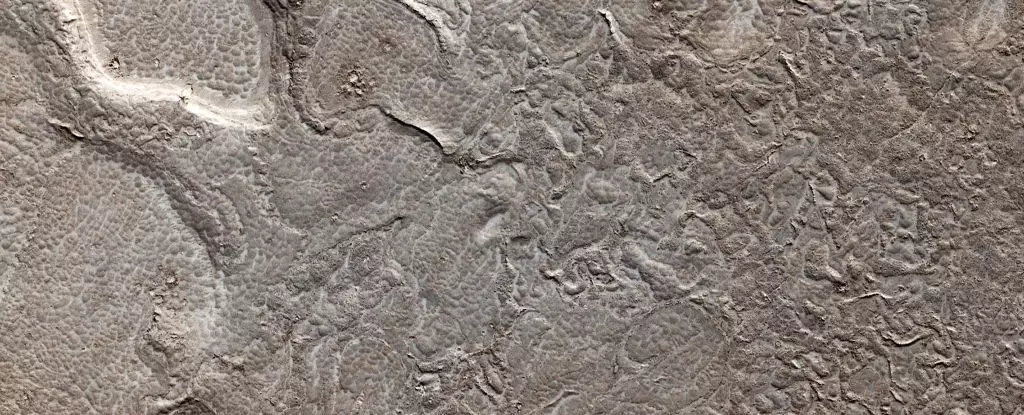Mars, often portrayed as a cold and lifeless planet, has proven time and again to be full of surprises. Recent research utilizing satellite imagery and ground penetrating radar has unveiled evidence of volcanic activity that challenges previous assumptions. The study conducted on a plain known as the Elysium Planitia not only reveals volcanic activity within the last 120 million years but also indicates that Mars might still be volcanically active today. This revelation opens up a whole new realm of possibilities and underscores the need for further exploration and investigation.
The surface of Mars at the Elysium Planitia is a captivating landscape, particularly for those fascinated by rocks. The presence of remarkably young lava flows on the surface has perplexed scientists, prompting them to delve deeper into the volcanic history of the region. Furthermore, the landscape displays features carved out by the interaction between lava and ice or liquid water, resulting in steam explosions. This similarity to terrestrial landscapes, such as hot springs, which thrive with microbial life, suggests that Mars could potentially harbor life as well. The prospect of life emerging in these volcanic landscapes warrants further exploration and investigation.
To gain a comprehensive understanding of the volcanic history of the Elysium Planitia, the researchers utilized a combination of data from different instruments. These included topographic maps to discern surface features, satellite imagery to study specific characteristics, and ground-penetrating radar to analyze density maps up to 140 meters below the surface. This exhaustive approach allowed the researchers to reconstruct each individual lava flow in three dimensions, shedding light on the complex volcanic history of the region.
The survey of the Elysium Planitia unveiled a staggering revelation – the landscape is composed of material from more than 40 volcanic events spanning a period of 120 million to 1 million years ago. Some of these eruptions were nothing short of epic. For instance, one eruption flooded Rahway Valles with over 16,000 cubic kilometers of molten basalt, while another inundated Marte Vallis with 12,200 cubic kilometers of lava. Athabasca Valles experienced a similar fate, as it was flooded with 4,000 cubic kilometers of molten rock. These cataclysmic events not only shaped the landscape but also had the potential to release catastrophic floods of groundwater concurrently. The addition of water to volcanic eruptions creates explosive events, and such interactions could have significantly influenced Mars’ geological evolution.
Contrary to popular belief, Mars exhibits surprising signs of seismic activity and volcanic features on its surface. Recent seismic data collected by the Mars InSight lander revealed a notable amount of quake activity, much of which can be attributed to volcanism. These new findings in the Elysium Planitia region indicate that understanding Mars’ volcanic history is crucial to uncovering the planet’s hidden water reserves. Large water ice deposits may be lurking underground in this area, potentially even to this day. This, in turn, suggests that Mars is not a desolate and dormant planet but rather one that is still volcanically active and geologically dynamic.
The recent discovery of volcanic activity in the Elysium Planitia has shattered our preconceived notions about Mars. This research showcases the planet’s potential for harboring life, as well as its active geology. It highlights the need for further exploration and investigation into Mars’ volcanic history and its implications for the search for life beyond Earth. As we delve deeper into the mysteries of Mars, this newfound knowledge will guide future missions and pave the way for a better understanding of our neighboring planet. Indeed, Mars is far from cold and lifeless; it is a dynamic and volcanically alive world waiting to be explored.



Leave a Reply